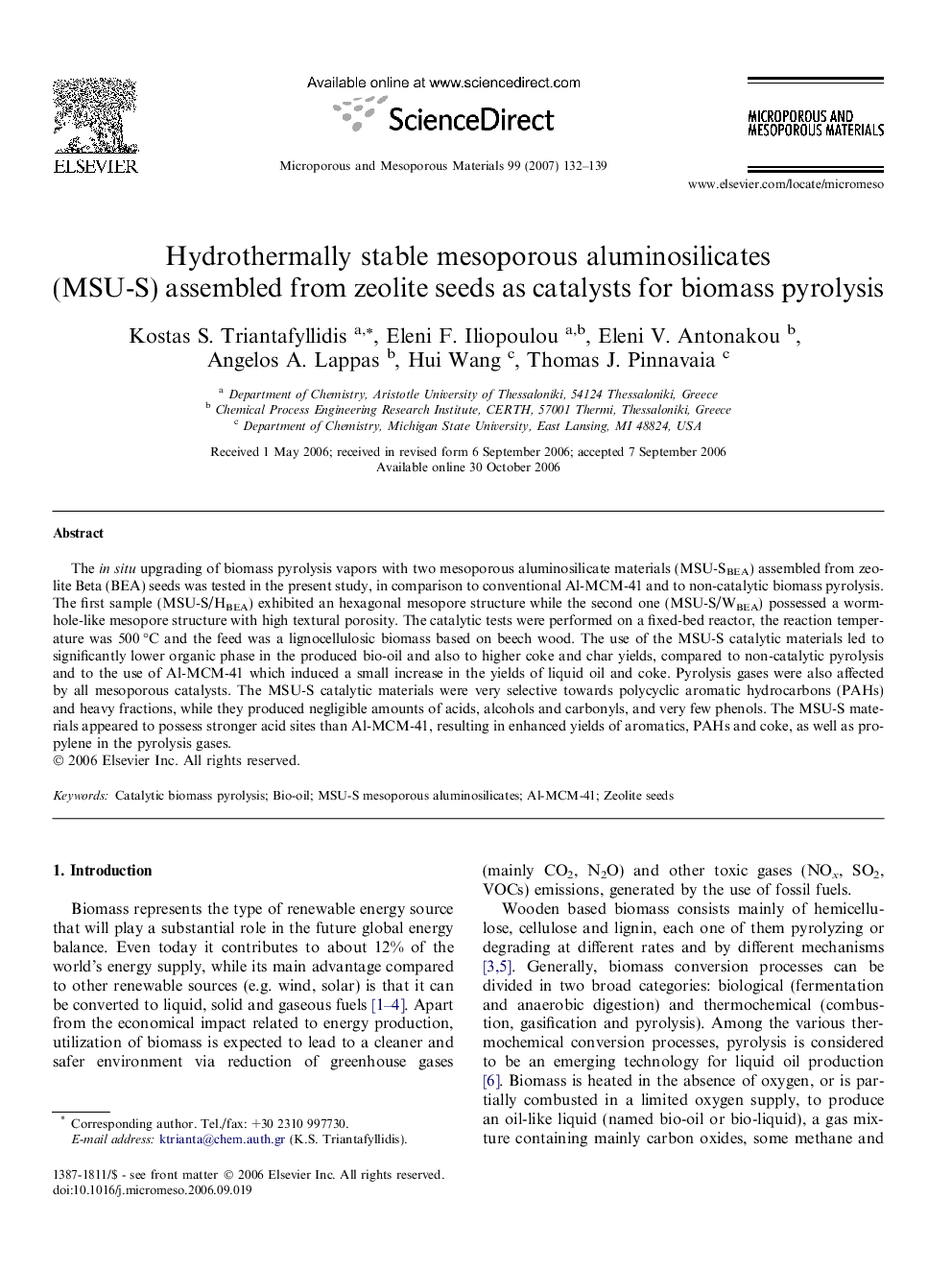| Article ID | Journal | Published Year | Pages | File Type |
|---|---|---|---|---|
| 77271 | Microporous and Mesoporous Materials | 2007 | 8 Pages |
The in situ upgrading of biomass pyrolysis vapors with two mesoporous aluminosilicate materials (MSU-SBEA) assembled from zeolite Beta (BEA) seeds was tested in the present study, in comparison to conventional Al-MCM-41 and to non-catalytic biomass pyrolysis. The first sample (MSU-S/HBEA) exhibited an hexagonal mesopore structure while the second one (MSU-S/WBEA) possessed a wormhole-like mesopore structure with high textural porosity. The catalytic tests were performed on a fixed-bed reactor, the reaction temperature was 500 °C and the feed was a lignocellulosic biomass based on beech wood. The use of the MSU-S catalytic materials led to significantly lower organic phase in the produced bio-oil and also to higher coke and char yields, compared to non-catalytic pyrolysis and to the use of Al-MCM-41 which induced a small increase in the yields of liquid oil and coke. Pyrolysis gases were also affected by all mesoporous catalysts. The MSU-S catalytic materials were very selective towards polycyclic aromatic hydrocarbons (PAHs) and heavy fractions, while they produced negligible amounts of acids, alcohols and carbonyls, and very few phenols. The MSU-S materials appeared to possess stronger acid sites than Al-MCM-41, resulting in enhanced yields of aromatics, PAHs and coke, as well as propylene in the pyrolysis gases.
